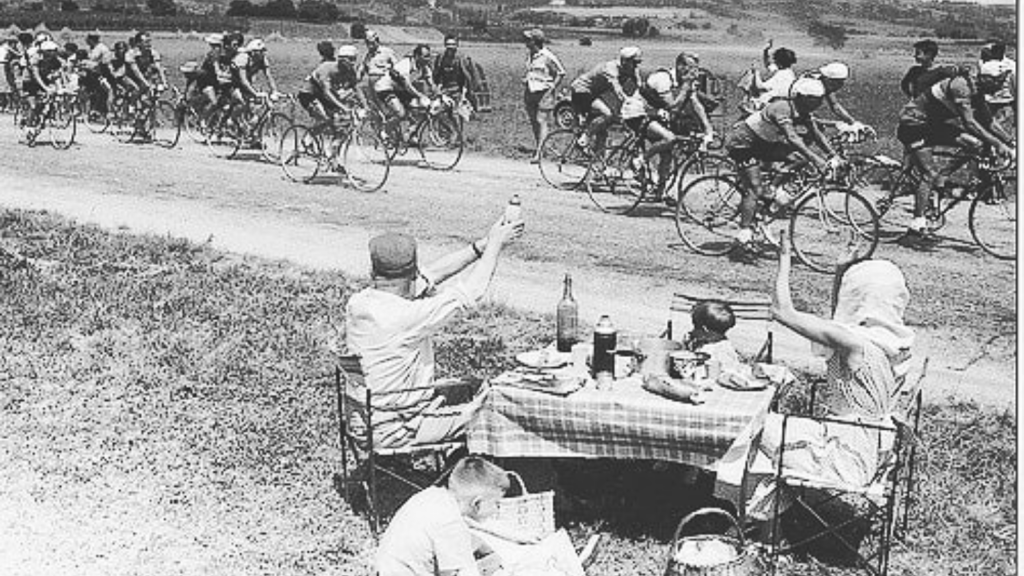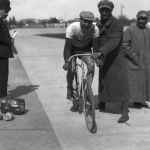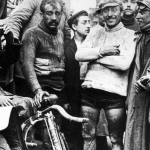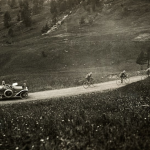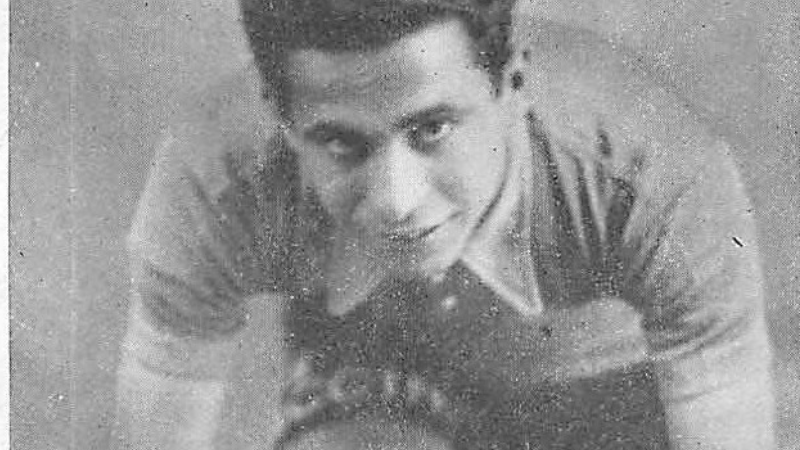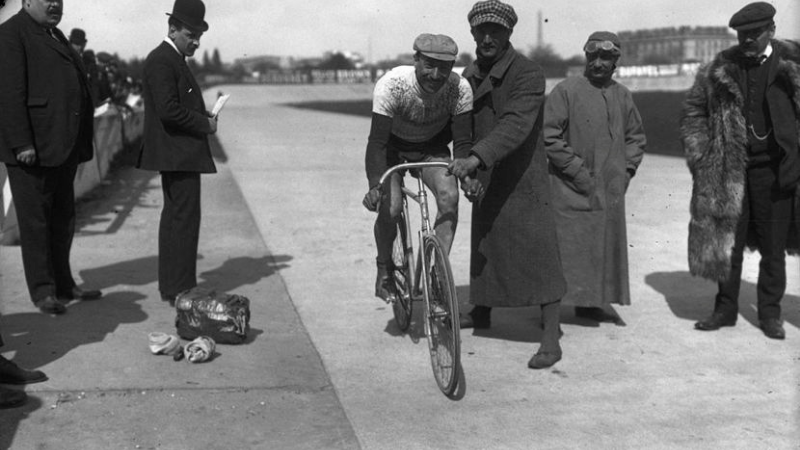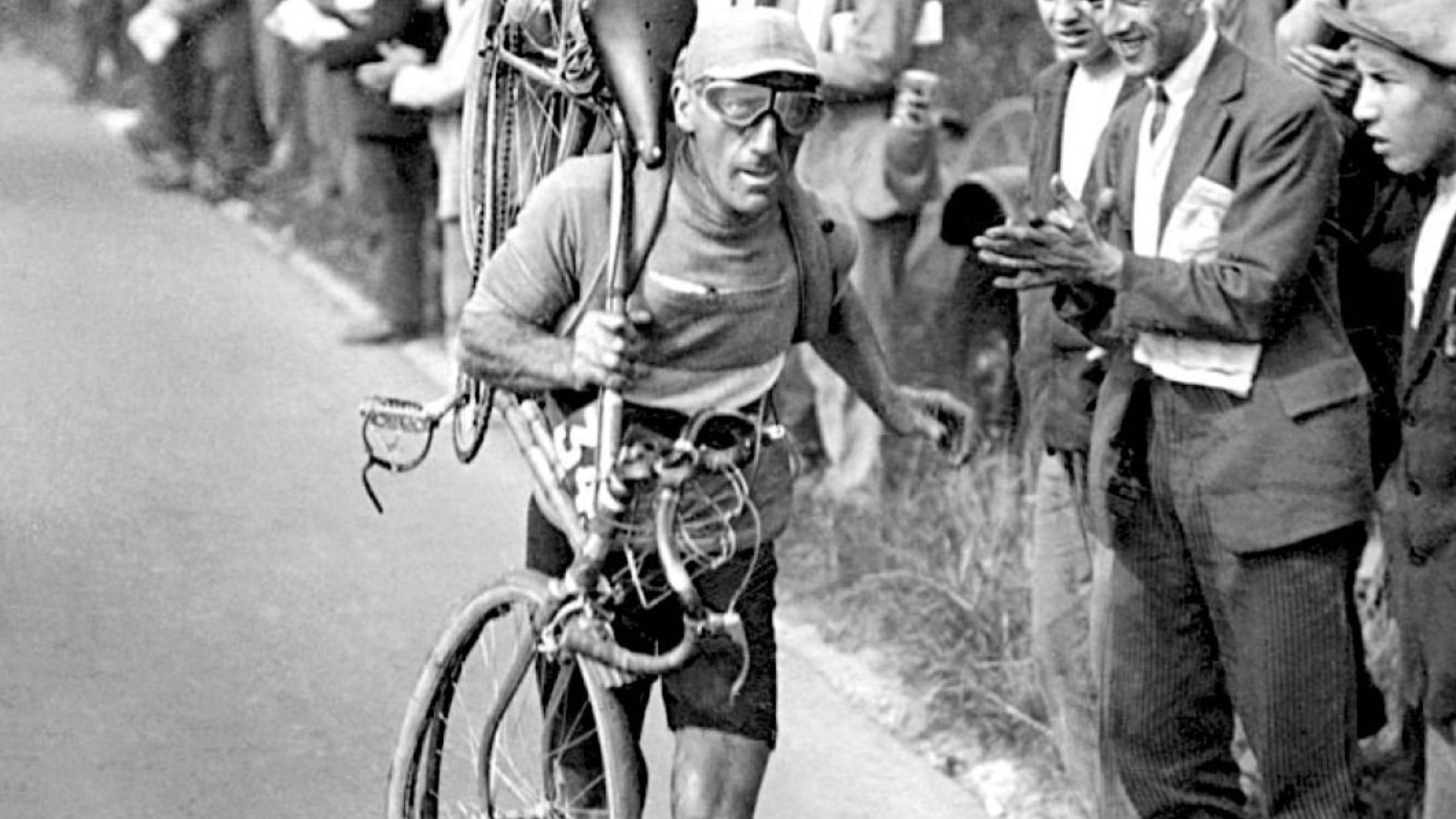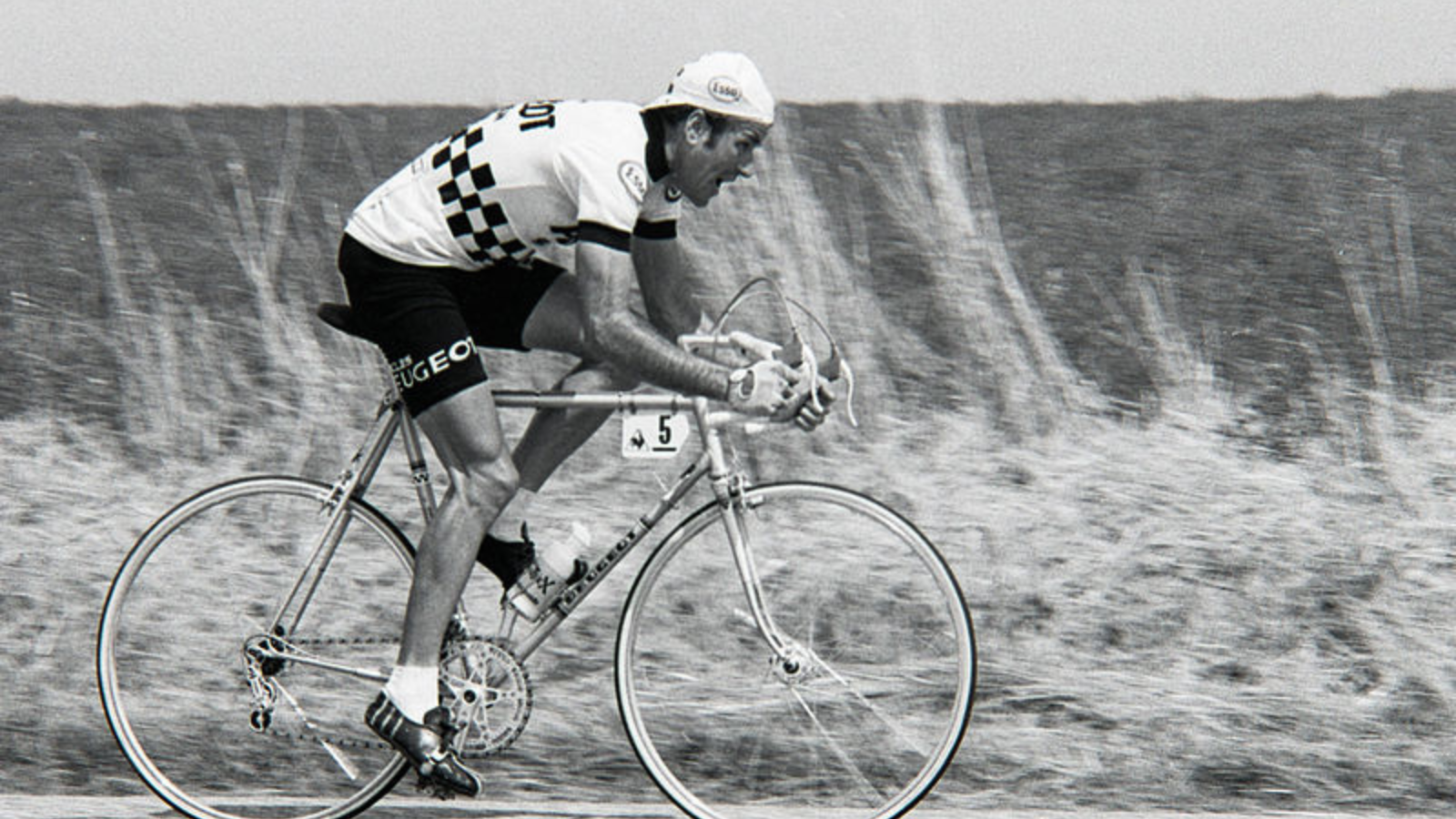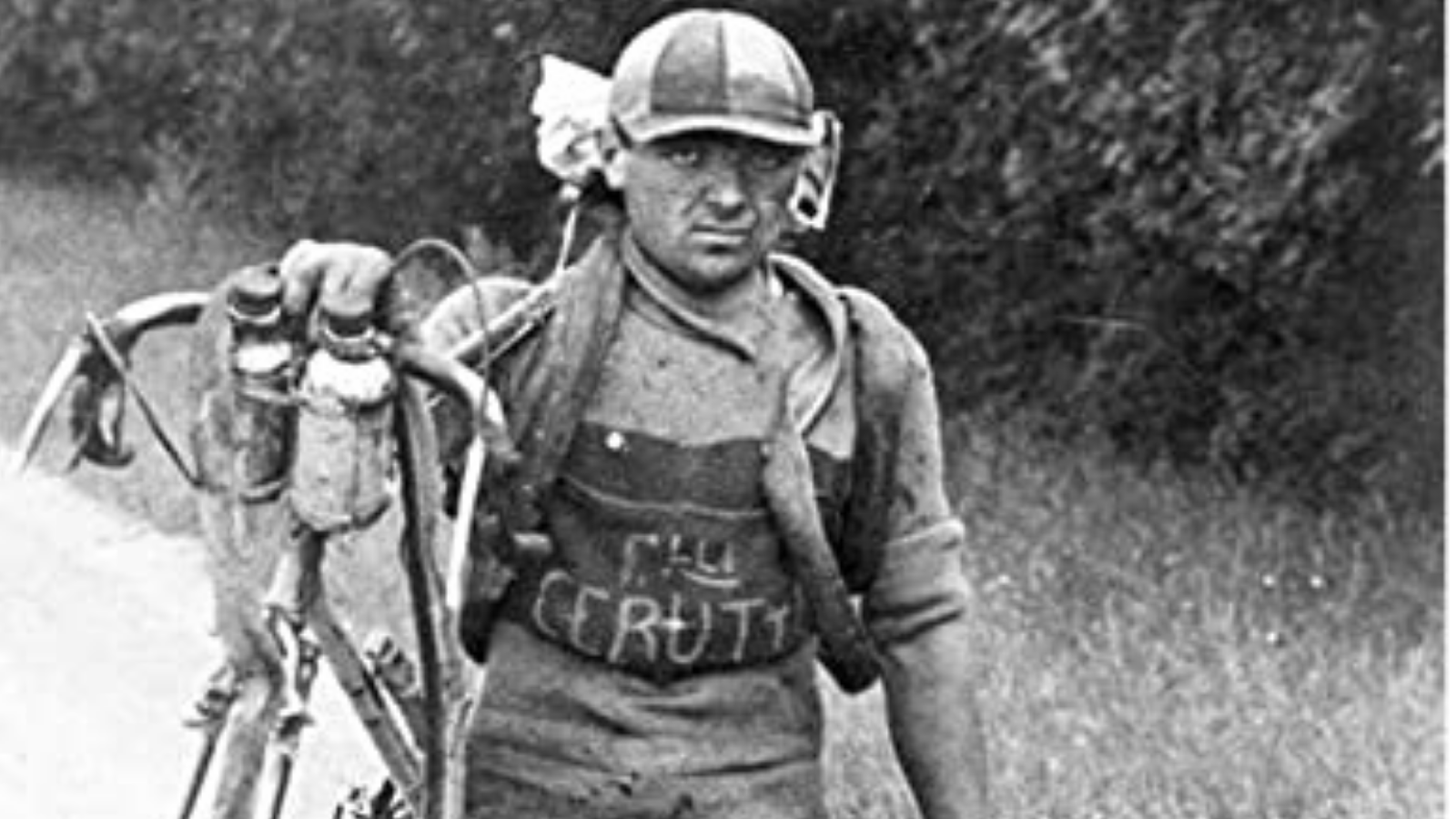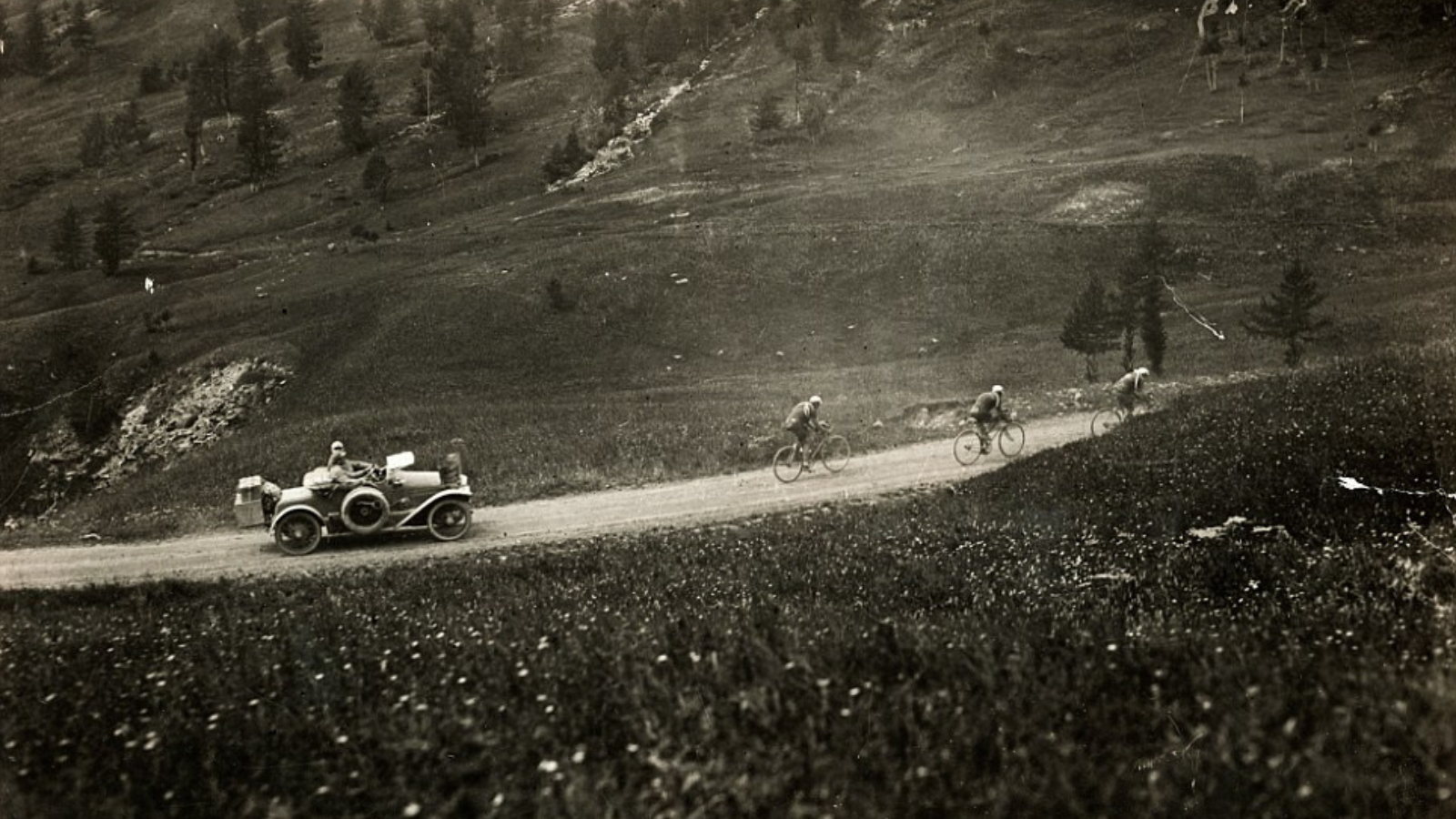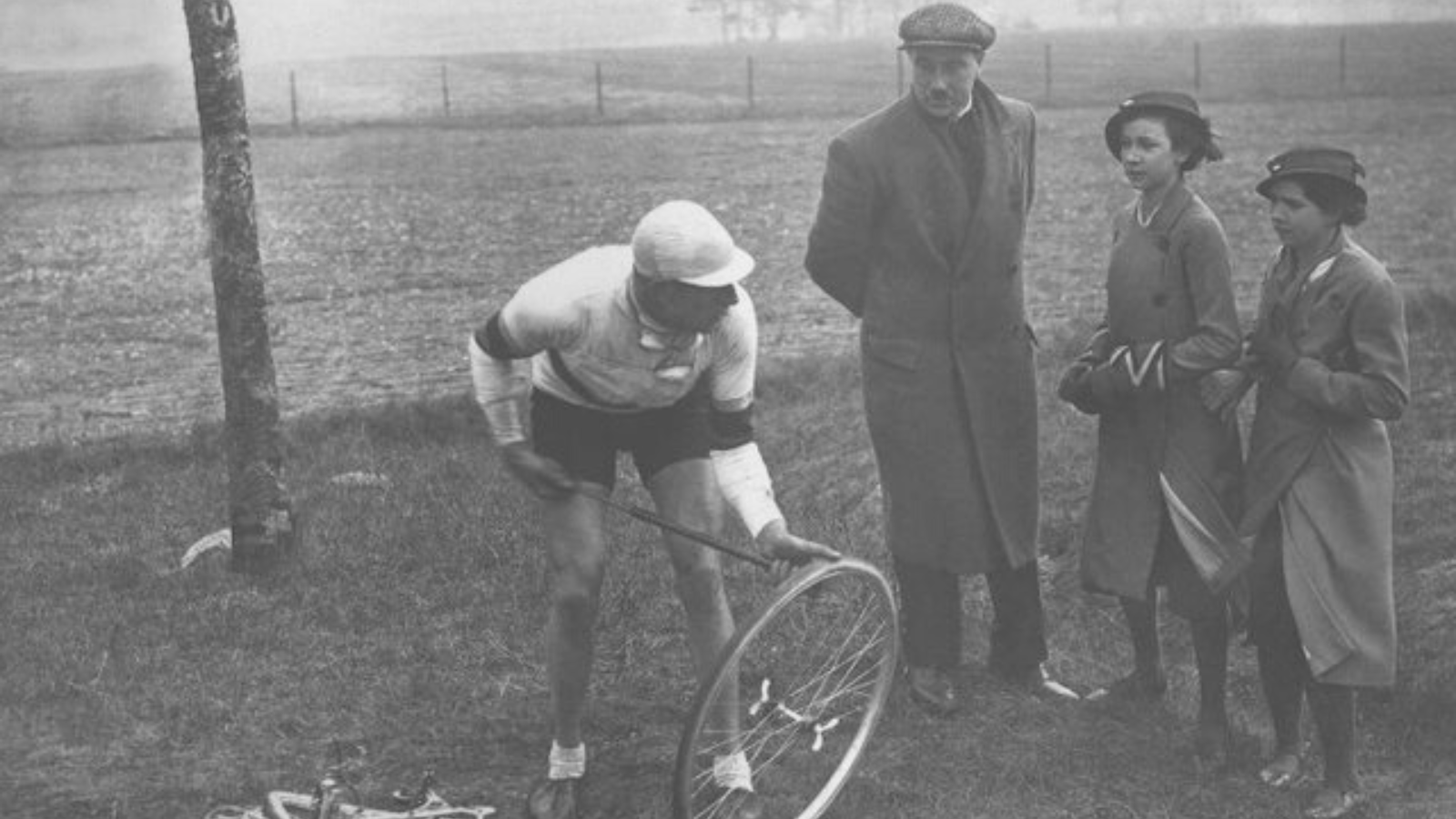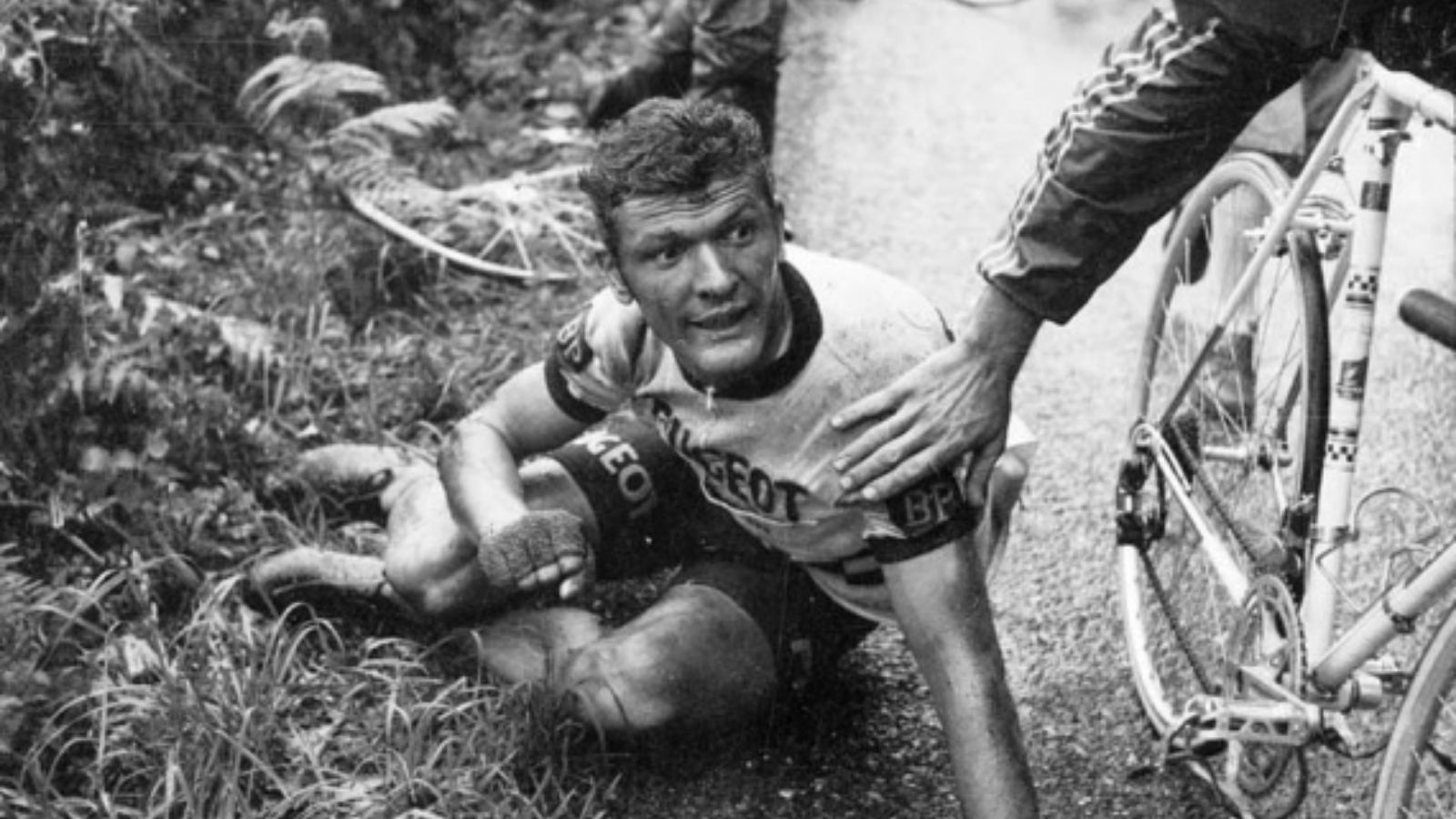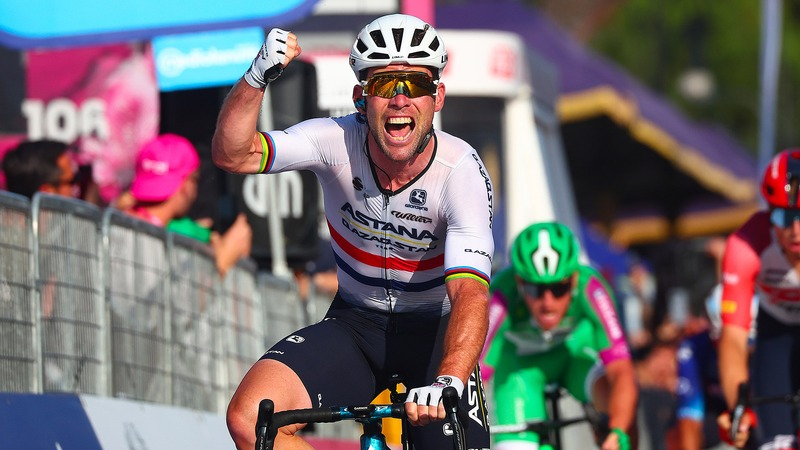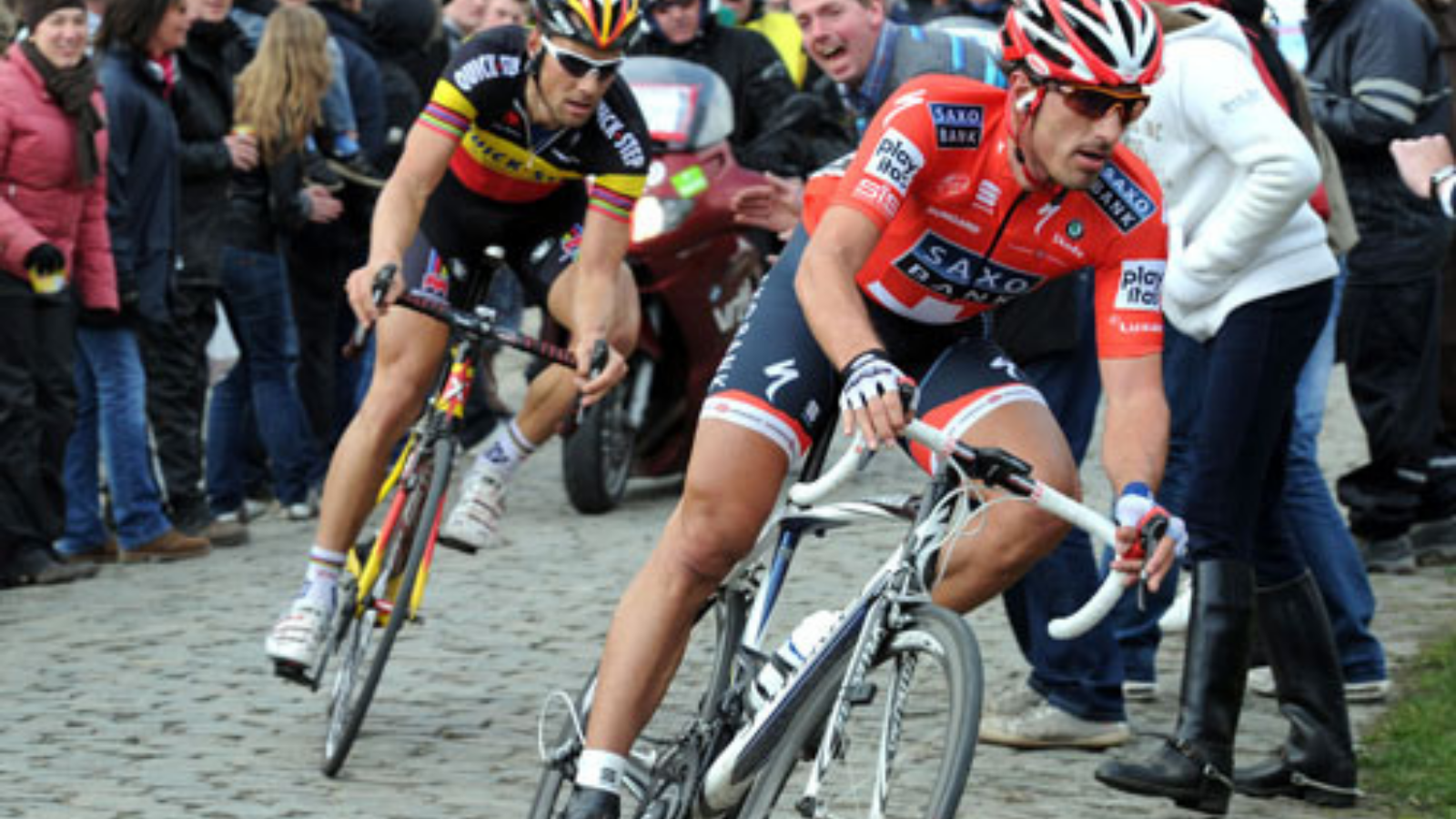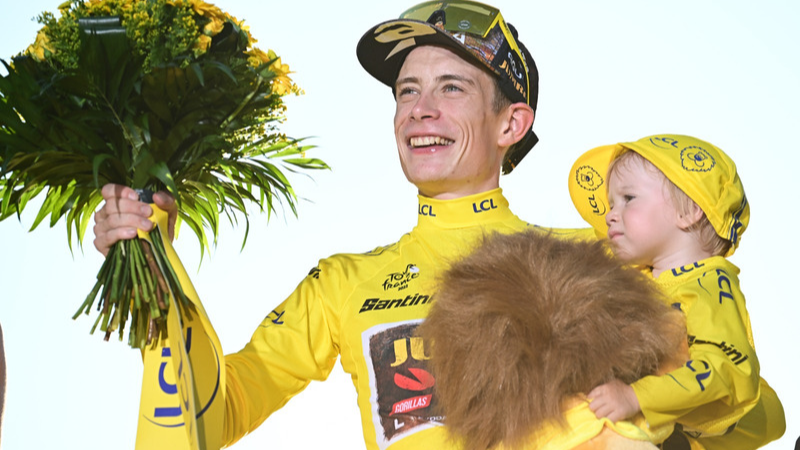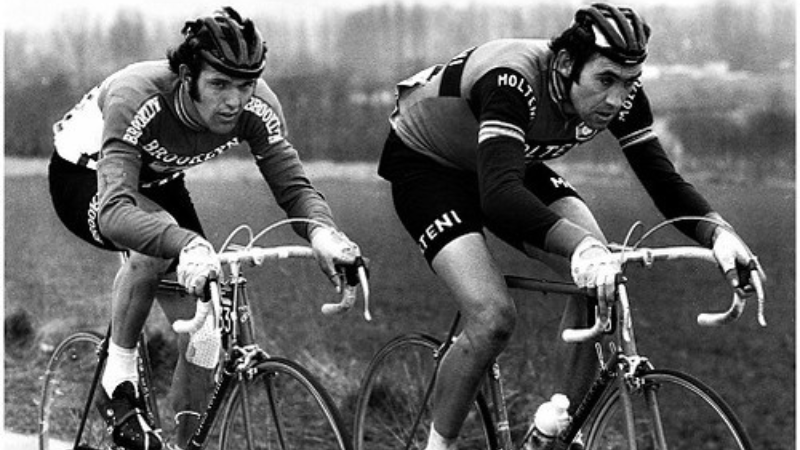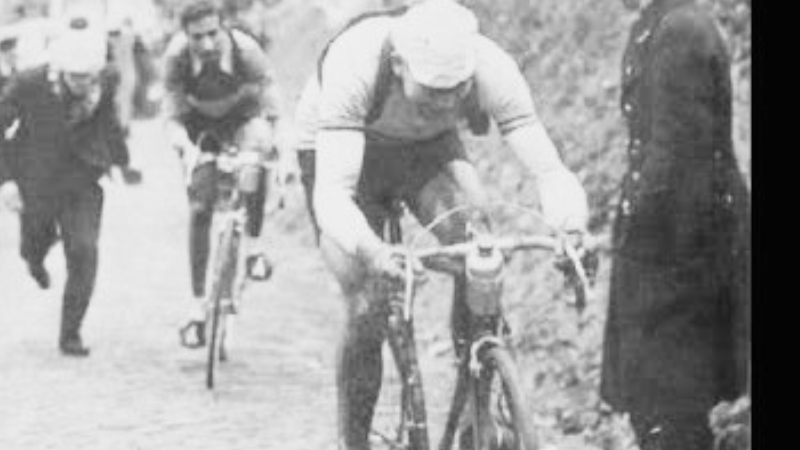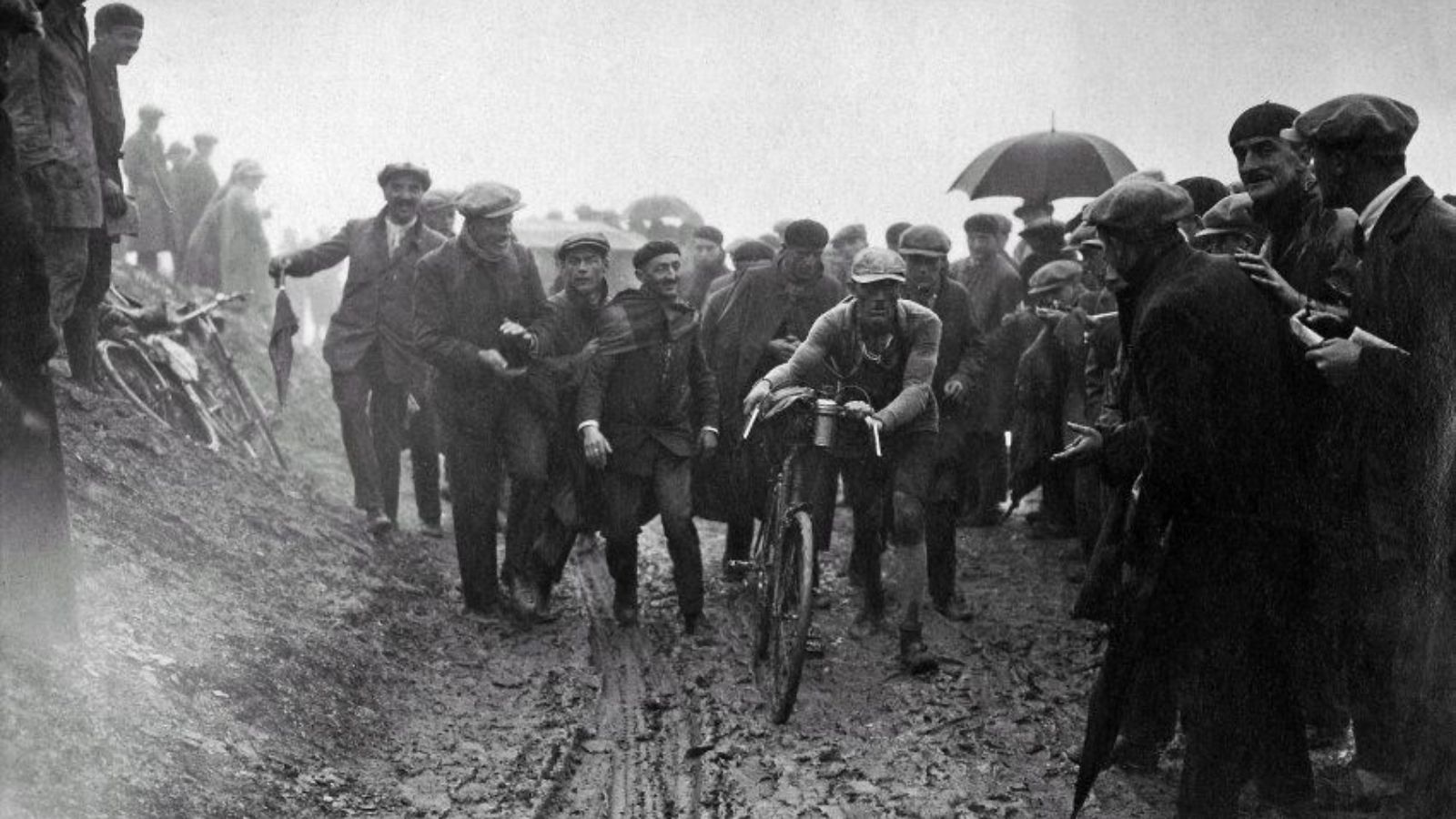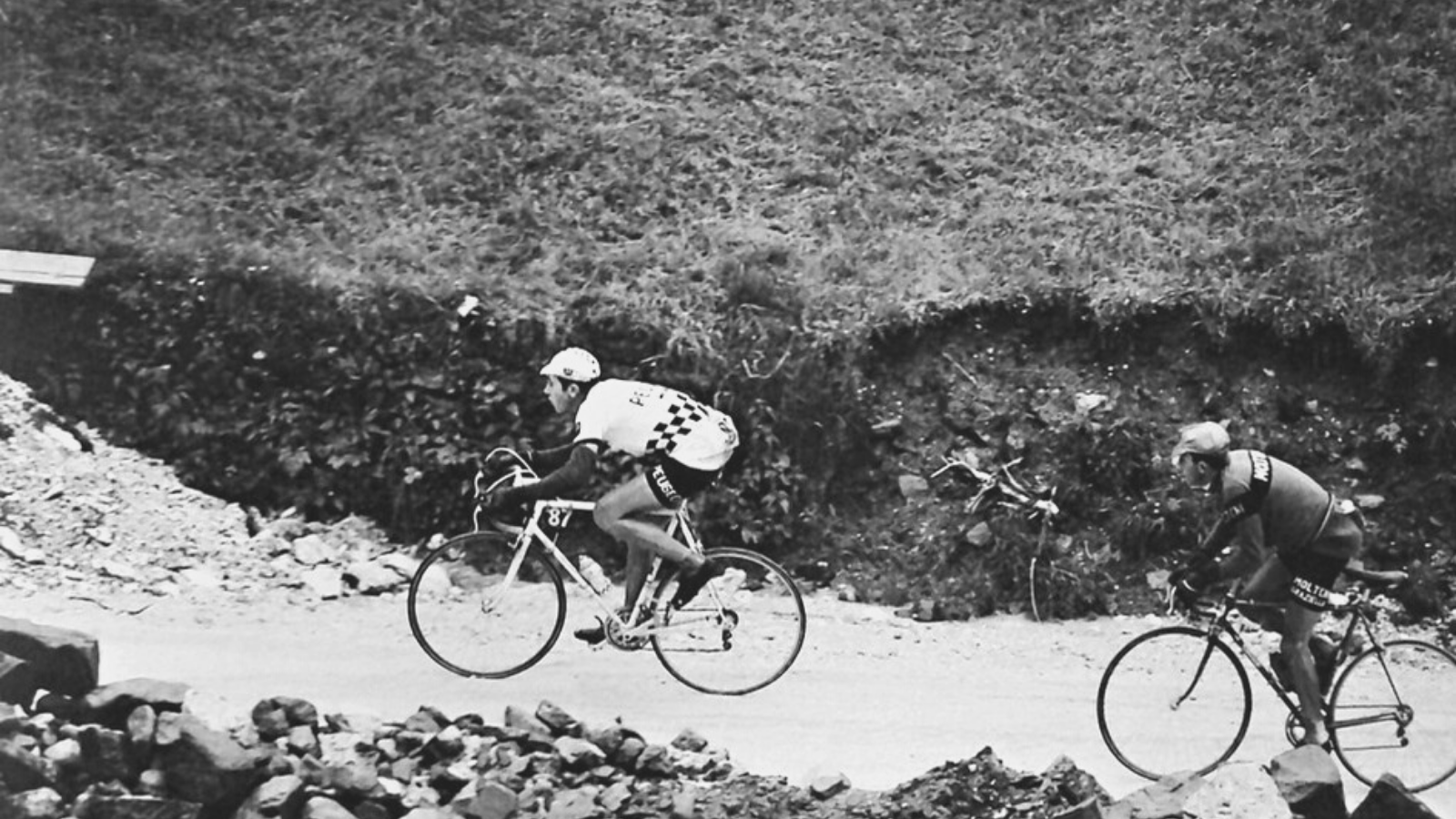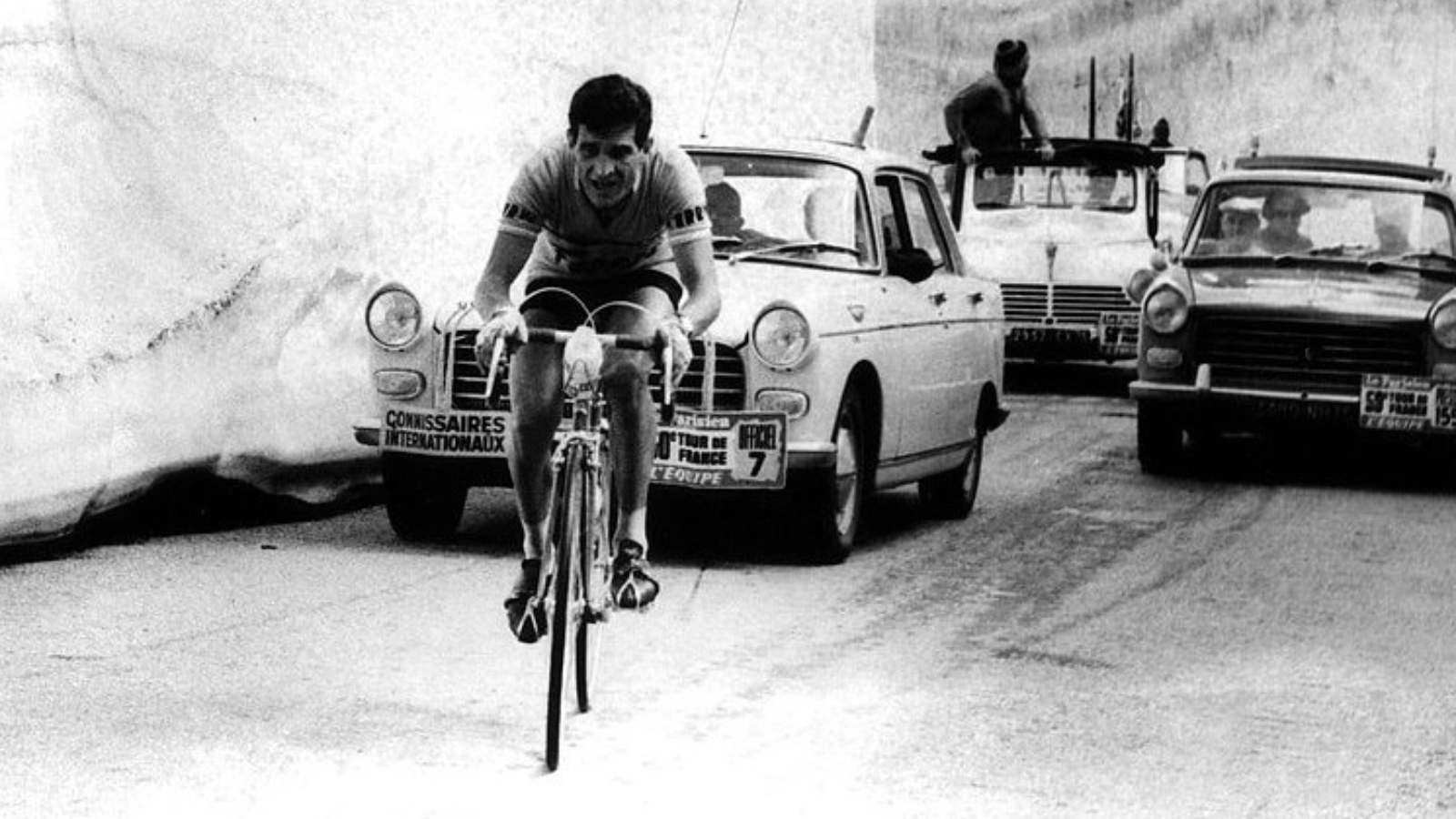In our supermodern 21st-centurian life, when everything is too chaotic and changing too fast, sometimes we so easily succumb to the illusion that past was a better place.
Simplier and more idyllic.
This trend seems to be true also when (and why) we're turning so ardently to the time of black & white images, as most likely the majority of the visitors on PelotonTales does.
Sometimes we're deliberately searching vintage cycling images would fit into our preconception about a more idyllic and happier time. Two Tour de France riders are sitting on the step of a tavern and drinking beer. Cyclists are smiling at the camera while sitting at a small table and about to eat their well-deserved meal at the end of a long and exhausting day. Other cyclists just having fun under a nice little parasol while riding on the dusty roads. A family has a picnic on the side of the road while watching the cycling race. Etc.
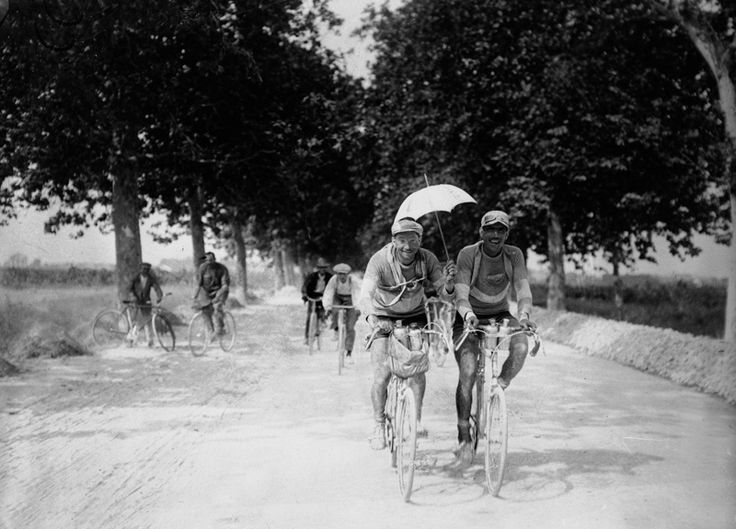
Sometimes we just see a picture, are leaning closer and closer to it to unravel its secret. Usually nothing extraordinary happenning on the picture, it's just an average moment from an average cycling race. Or a portrait of a tired rider looking into the camera, and we have this tempting illusion that he tries to say something with his gaze. Something about the past that is so different. So idyllic and simple. Because we are so eager to see the past that way.
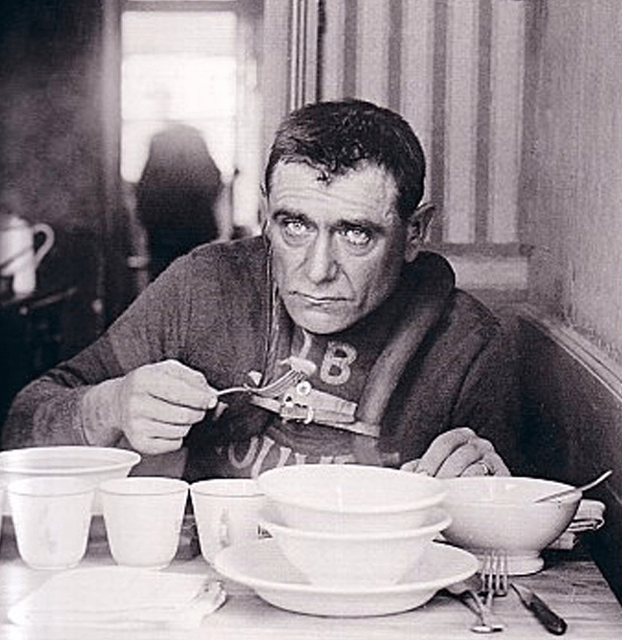
No wonder that the (not so) secret buzzword of the 21st century is
nostalgia.
The phrase has many definitions having given by scholars during the last few decades. Theories usually focus on the pain and yet also a strange joy of feeling impossible to connect to something that is gone in reality for good and now lives only in our sweetened memories. (Time sweetens memories, as we all know.)
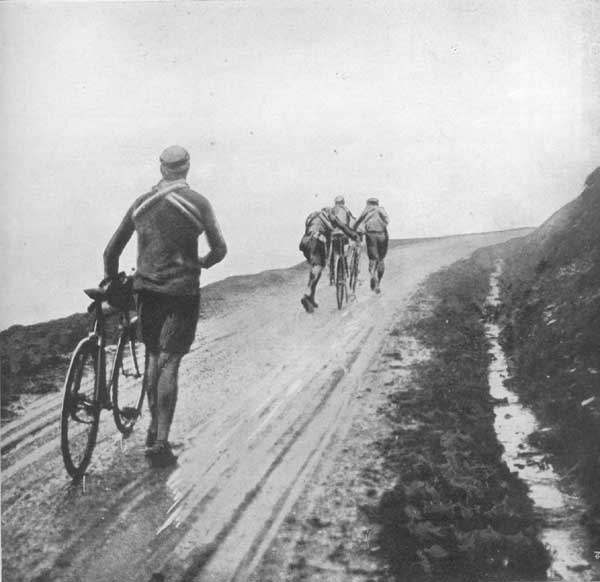
But there is also a different type of nostalgia. The one we feel towards things we never experienced, yet eagerly longing for. Ideas and illusions we cannot accept they're existing only in our imagination, therefore we're projecting it into the past we know only indirectly.
There is nothing more human than romanticizing the past.
(Or only a few things.)
Maybe that's why many people find it satisfying enough to take a glimpse at an old black and white picture and then scroll further instantly. "Please don't disturb me with facts and real stories about real people, I just want to feel comfortable in an imagined world for a moment. Because the reality gives me so much anxiety. " - they migh say. And it's OK.
But PelotonTales is more about stories than images, because I, the author of the blog feel more comfortable with the written words.
An yet the (rather rethoric) question is still valid.
Past was a better place?
As a literary scholar, who specialized in historical fiction I used to work with the present's imagination about the past on a daily basis. By doing this I frequently visit the field of cultural and social history. Hence I know that road cycling and especially the history of road cycling has some unique attributes resonating with the topics like imaginary past and nostalgia.
Road cycling races aren't held in a place separated from the everyday life, like a stadium, sporthall or a velodrome. Road cycling events are much more connected to the public places of the ordinary life than most of the sports. That's why, for example, has historical improtance which neighbour countries Tour de France visited during the early years of its history.
Also, because a cycling race sometimes covers more than 200 km, goes from one place to another, while the peloton split into small groups, we are not able to observe the whole story of a cycling event relying only what we can see with our own eyes. We need a little help. A medium. For example a television coverage that frequently cuts from one group to the other ones.
During the early days of road cycling races the newspaper was this medium. Actually, Tour de France was founded to increase the selling numbers of the sport newspaper L'Auto.
Road cycling was a marketing tool.
Because the pulishers knew that all those people who were cheering at the finish line for the winner, or just visited the café that served also as a checkpoint during the race want to know the whole story.
FROM THE EARLY DAYS OF ROAD CYCLING
Cyrille Van Hauwaert (Faces from the peloton)
Cyrille Van Hauwaert (1883-1974) was one of the most … Read more
5 facts about Tour de France 1903
The first Tour de France started at 3 pm … Read more
Climbing Col d’Allos at Tour de France 1914 -Vintage cycling image of the day
Tour de France 1914 started on the same day, … Read more
Thus the story of a cycling race was always told with a distinct flavor of sensationalism. Everything what happened on the road must have been epic and heroic. A race must have been always full of unexpected events. The narrative was focusing on dramas and rivalries. On great characters and their fascinating stories. Readers of the newspapers had to be involved into the story emotionally to want to buy the next issue.
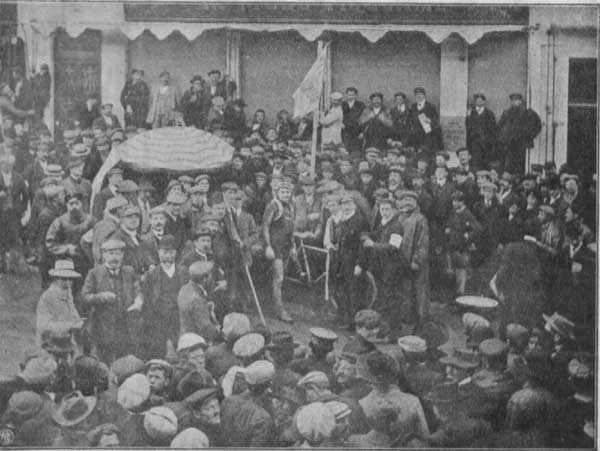
Therefore our feeling about the past as a place is not necessarily the usual false nostagia towards bygone eras.
The self-representarion of road cycling, especially during the early days of the sport, was always destined for epicness.
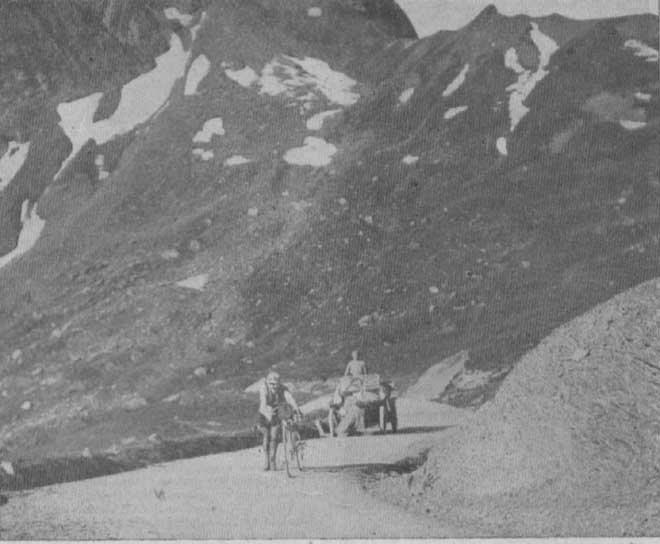
The first few decades of road cycling history is a complex cultural phenomenon that deserves a different approach than just a nice little blog with short posts about some extraordinary moments from the past. For a long-long time I was thinking what kind of special project that involves my many different interests would fit into a Patreon page. It should be related to road cycling but also to cultural history and theories, to all that stuff generally I used to write about on a daily basis.
I think I've finally found it. As I said before, nostalgia is such an important buzzword nowadays. But on the other hand, it's a bit tricky one. It's hard to find the right grip on it. The best way might be just circling around and around it with different themes.
So, if you find it intriguing, please join me on this intellectual (and partially a real) journey on Anita Pethő's Patreon.
For all those other visitors of PelotonTales who are here rather for some epic vintage cycling images and the fascinating (short )stories behind them, the blog provides, of course plenty of reading material.
Please scroll down for some post recommendations.
FACES FROM THE PELOTON
Faces from the peloton: Olimpio Bizzi (1916-1976)
The youngest Giro-stage winner ever, Olimpio Bizzi (1916-1976) was active as professional cyclist between 1936 and 1952. Practically, he was racing in the shadow of the greatest generation of Italian cyclists, including Learco Guerra, Gino Bartali, Fausto Coppi, or Giorenzo Magni Nevertheless, Bizzi had his own successes during his career. Besides some minor one-day race … Read more
Cyrille Van Hauwaert (Faces from the peloton)
Cyrille Van Hauwaert (1883-1974) was one of the most successful Belgian cyclist in the pre -WW1 era. His story began like a folktale. The big and strong Flemish farm boy, who didn’t speak French arrived in the office of the La Française team’s directeur sportif, Pierre Pierrard two days before Paris-Roubaix in 1907. Van Hauwaert … Read more
Faces from the peloton: Victor Fontan (1892-1982)
A cyclist running while carrying his bike on his shoulder. Surely, you’ve seen this vintage cycling image several times. Now it’s time to learn a bit more about the protagonist of the picture. Victor Fontan (1892-1982) in the Faces from the peloton series of PelotonTales blog. A local rider World War I (as did World … Read more
Faces from the peloton: Hippolyte Aucouturier (1876-1944)
Although the idea of a French cyclist in a striped shirt might seem like a little bit of a cliché, sometimes stereotypes are carrying quite much truth in themselves. Just take a look at Hippolyte Aucouturier! One of the most iconic characters from the early days of road cycling races. Nevertheless, he was not only … Read more
Faces from the peloton: Raymond Delisle (1943-2013)
Raymond Delisle was one of those cyclists who was always lurking around the favourites in the most important and/or most iconic Tour de France stages without having significant success. Delisle started his professional career in 1965 in team Peugeot, where he was racing till 1976. (His last year as professional cyclist he spent with the … Read more
FAMOUS VINTAGE CYCLING IMAGES
The grumpy cyclist with the broken bicycle – Giusto Cerutti at Tour de France 1928
Giusto Cerutti (1903-1993) had at least one bad day at the Tour de France in 1928.We don’t know much about the grumpy cyclist with the broken bicycle. But one thing is sure, he is the unlucky (anti)hero of one of the most searched vintage cycling images on the internet.According to ProCyclingStats, Cerutti abandoned the race … Read more
Climbing Col d’Allos at Tour de France 1914 -Vintage cycling image of the day
Tour de France 1914 started on the same day, 28th June, as the Austro-Hungarian Archduke Franz Ferdinand and his wife, Sophie, Duchess of Hohenberg were assassinated in Sarajevo. When the riders lined up in the middle of the nigh for the start of the first stage in Paris, they knew nothing about that this day … Read more
Georges Speicher at Paris-Roubaix 1935
Although Paris-Roubaix in 1936 was more important in the career of Tour de France winner (1933) cyclist Georges Speicher, one of the most popular funny vintage cycling images from the good old days of road cycling was taken one year earlier.Georges Speicher (1907-1978) was a French rider, the first cyclist who won Tour de France … Read more
Iconic Cycling Images: Bernard Thévenet after a crash (Tour de France 1972)
The race in 1972 was Bernard Thévenet’s second Tour de France. In his devutant year, in 1971 he finished fifth in the general classification and also won stage. It was a bit of a surprise performance, but in the subsequent year he was considered as one of the favourites. The 7th stage of Tour de France … Read more
Cyclists meet a local inhabitant during Tour de France 1925
During the first few decades in the history of Tour de France, mountain routes were kind of “terrae incognitae”, uncharted territories. We all know the story when Alphonse Steniès persuaded Henri Desgrange to include Tourmalet in the program of Tour de France 1910. He was struggling even to find a car driver, a local guide … Read more
CYCLING FUN FACTS
The youngest and the oldest Giro d’Italia stage winners
Olimpio Bizzi is the younges stage winner ever with19 years and 229 days.He won the 8th stage at Giro d’Italia 1936.Mark Cavendish was38 years and 7 daysold, when he crossed the finish line first in the last stage of Giro d’Italia 2023.
Double winners of Ronde van Vlaanderen and Paris-Roubaix
Winners of both Ronde van Vlaanderen and Paris-Roubaix in the same year: Henri Suter 1923 Romain Gijssels 1932 Gaston Rebry 1934 Raymond Impanis 1954 Fred De Bruyne 1957 Rik Van Looy 1962 Roger De Vlaeminck 1977 Peter van Petegem 2003 Tom Boonen 2005 Fabian Cancellara 2010 Tom Boonen Belgium 2012 Fabian Cancellara 2013 Mathieu van … Read more
The slowest and the fastest Tour de France
You might wonder which Tour de France edition was the slowest and wich. one the fastest. Here you have the answer.The slowest Tour de Francewas the 13th edition, held between 29th June and 27 July in 1919. The 5560 km long route of the race was divided into 15 stages. (And it wasn’t even the … Read more
9 fun facts of Omloop Het Nieuwsblad
The first edition (originally called Omloop van Vlaanderen) was held on 25 March 1945. It was only a few weeks after Belgium was liberated by the Aliied Forces, Jerome Stevens, journalist of the Het Volk newspaper, crewtor of the rsce had to have an approval of the British Army to hold the event. Jerome Stevens … Read more
Omloop Het Nieuwsblad winners
List of Omloop Het Nieuwsblad winners 1945-20231945 Jean Bogaerts (Alcyon–Dunlop)1946 André Pieters (Alcyon–Dunlop)1947 Albert Sercu (Bertin–Wolber)1948 Sylvain Grysolle (Zircon)1949 André Declerck (Bertin–Wolber)1950 André Declerck (Bertin–Wolber)1951 Jean Bogaerts (Starnord–Wolber)1952 Ernest Sterckx (L’Avenir)1953 Ernest Sterckx (L’Avenir)1954 Karel De Baere (Mercier–BP–Hutchinson)1955 Lode Anthonis (L’Avenir)1956 Ernest Sterckx (L’Avenir)1957 Norbert Kerckhove (Faema–Guerra)1958 Joseph Planckaert (Carpano)1959 Seamus Elliott (Helyett–Fynsec)1960 No race1961 … Read more
ROAD CYCLING IN HIGH MOUNTAINS
The toughest Tour de France stage ever
The 10th stage of Tour de France 1926 is often dubbed as the toughest stage ever in the history of the race. The 326 km long route between Bayonne and Luchon on the 6th July 1926 went down in history also as one of the most chaotic ones thanks to the extreme weather conditions in … Read more
Climbing Col d’Allos at Tour de France 1914 -Vintage cycling image of the day
Tour de France 1914 started on the same day, 28th June, as the Austro-Hungarian Archduke Franz Ferdinand and his wife, Sophie, Duchess of Hohenberg were assassinated in Sarajevo. When the riders lined up in the middle of the nigh for the start of the first stage in Paris, they knew nothing about that this day … Read more
Cyclists meet a local inhabitant during Tour de France 1925
During the first few decades in the history of Tour de France, mountain routes were kind of “terrae incognitae”, uncharted territories. We all know the story when Alphonse Steniès persuaded Henri Desgrange to include Tourmalet in the program of Tour de France 1910. He was struggling even to find a car driver, a local guide … Read more
Eddy Merckx on Blockhaus (Giro d’Italia 1967)
Every road cycling legend, every great champion has that first epic moment that defines their career. The moment that takes everyone by surprise, yet deep down, everyone knows this cyclist was always capable to do it. In 1967 Eddy Merckx was already a two-time Milano-Sanremo champion, after he repeated his success in previous year. He … Read more
Fernando Manzaneque on the Col d’Iseran (Tour de France 1963)
Snow at the Tour de France? Yes, it happens sometimes, especially, when the race visits such high places like Col d’Iseran in the Alps. In the 16th stage of Tour de France 1963, the peloton visited the Alps. It was a 202 km long stage between Grenoble and Val d’Isere, including Col de la Croix … Read more
